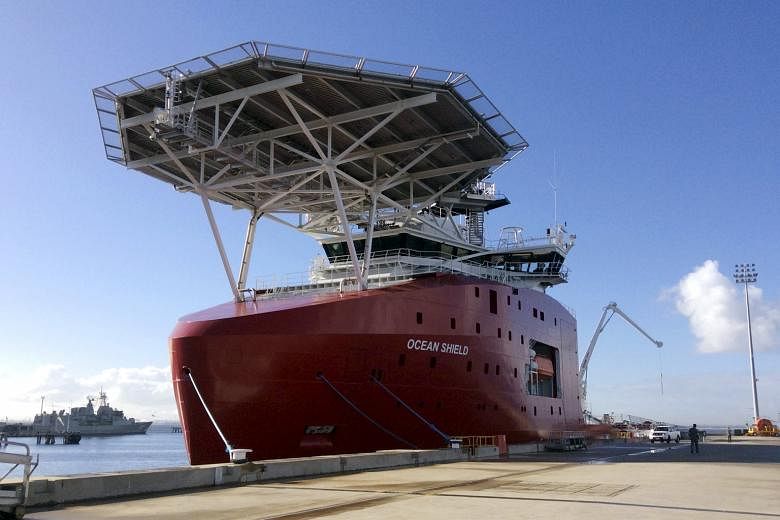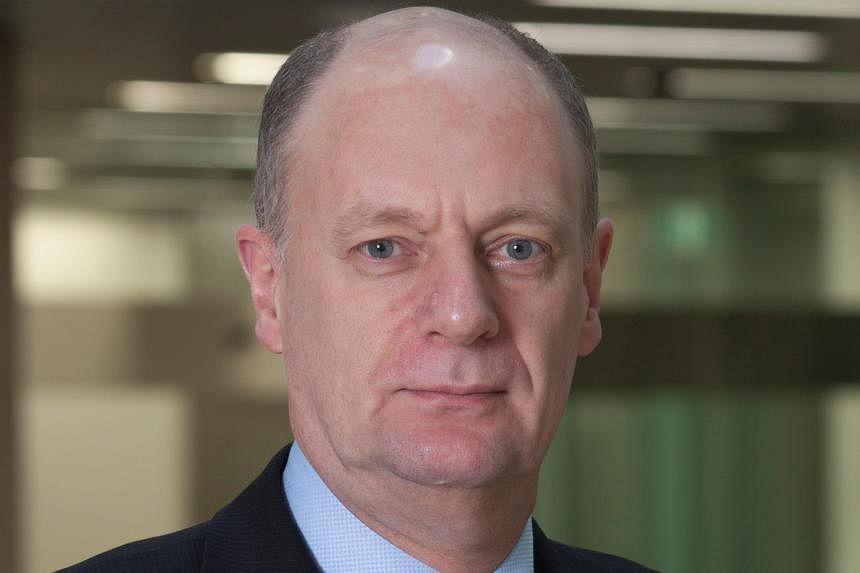SYDNEY • The man leading the search for Malaysia Airlines Flight 370 is showing the strain after almost two years of fruitless toil.
Mr Martin Dolan, the head of the Australian Transport Safety Bureau, said he struggles to sleep at times, gnawed by thoughts that wreckage from the Boeing 777 may have slipped through the sonar net scanning 120,000 sq km of the southern Indian Ocean.
MH370 is weeks away from becoming aviation's biggest unsolved mystery since Amelia Earhart disappeared in 1937. Of the three million components in the jet, only one has turned up - a barnacle-encrusted wing flap - on Reunion Island, thousands of kilometres from the search area. There have been no traces of the 239 people on board, their luggage or even the life jackets that were supposed to float.
-
MH370 SEARCH BY NUMBERS
-
A$180 MILLION (S$180 MILLION): Cost of search
120,000 SQ KM: Size of search area
35,000 SQ KM: Area left to be scanned
4: Number of ships involved
20 PETABYTES: The amount of data collected from the search zone
"There's always this question: Have we missed something?" Mr Dolan, 58, said at his office in Canberra. "That's the sort of thing that will occasionally keep me awake at night."
Some of the world's most experienced search-and-rescue experts have increasingly come to accept that the A$180 million (S$180 million) search may fail.
The waters in the search area are up to 6km deep and full of trenches and submerged peaks. Last month, a towed sonar vehicle collided with a volcano rising 2,200m from the seabed. The device was severed and sank to the bottom.
Vessels still have to scan about 35,000 sq km - an area bigger than Belgium. The newest reinforcement is a Chinese ship with high- definition sonar. The Dong Hai Jiu 101 will focus on areas of the ocean floor that are difficult to scan with conventional sonar when it arrives this month, Mr Dolan said.
Ships are re-checking about 100 locations, some of them inside an oval-shaped patch towards the southern end of the search area. This hot spot is most likely to contain the wreckage, according to Australia's Defence Science and Technology Group, a government agency normally devoted to national security.
But without fresh clues, the hunt should end in about June, when four ships are due to finish combing the seas off Western Australia, Mr Dolan said.
Within a rectangle the size of North Korea, vessels have scoured most of the patch believed to be the likely impact point - and come up empty. Nor are investigators any closer to ascertaining what happened inside the plane after it took off from Kuala Lumpur on March 8, 2014, for Beijing. "We were ready for most things, but MH370 has been unpredictable all the way through," Mr Dolan said. "It's a possibility we will not succeed."
The disaster unfolded when air traffic controllers lost contact with MH370 less than an hour after takeoff as it approached Vietnam. Military radar showed the plane took a left turn, looped back across Malaysia and headed north-west up the Strait of Malacca.
Radar contact then was lost, but an orbiting satellite picked up pings from the plane. Analysis of those hourly check-ins indicates MH370 cruised south over the Indian Ocean for about six hours.
The extent of human intervention in the silent disaster is not known. The last recorded words from MH370's pilots, at 1.19am on March 8, were: "Good night Malaysian Three Seven Zero."
Malaysia's Prime Minister Najib Razak has said the plane was deliberately steered off course, and the homes of the pilot and co-pilot were searched. The disaster was the beginning of the end for Malaysia Airlines as a listed entity. Four months after MH370 disappeared, another of its planes, Flight MH17, was shot down over Ukraine.
A Malaysian government investment company bought out the airline the same year as passenger traffic slumped and losses widened.
Investigating the possibility that someone was steering the plane and glided it without power until it hit the water would mean tripling the search area. That is a very unlikely scenario, and it risks overwhelming investigators, Mr Dolan said. "Governments are just not willing to put the resources into that sort of potential extension."
But even the most comprehensive search will not satisfy the victims' families if it fails. "We are going to try as hard as we can to lobby for the search to continue beyond June," said Ms Grace Subathirai Nathan, 28, whose mother was a passenger. "I need an answer." The majority of the passengers on board were Chinese.
BLOOMBERG


